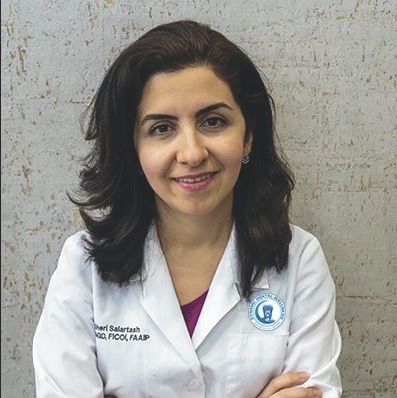
More Dental Health Articles
Importance of Early Orthodontic Treatment
Parents are concerned about their children’s crowded teeth, protruding teeth and spaces between teeth. Today’s parents do not accept the answers given by some dentists and orthodontists when observing that their son or daughter has a problem. “No treatment is indicated at this time, the patient is too young, and the malocclusion will be observed and treated when the permanent teeth erupt in.” For practitioners, trained with a preventive philosophy, this approach seems completely illogical when statistics have proven that malocclusions, when left untreated, worsen over time.
One of the main reasons why your dentist should treat children during the mixed dentition stage of development is that there is such a high incidence of malocclusion in children. This was quite evident from the Burlington Growth Study, Toronto, Canada, where it was revealed that 75% of children, age 12, have some form of malocclusion.
Since 90% of the face is developed by age 12, practitioners must treat early if they want to guide and, in fact, modify the growth of younger patients. Emphasizing a functional-orthopedic philosophy and a two-phase orthodontic treatment should be recommended with an initial evaluation between age six and seven.
Phase 1 – Mixed Dentition
(Orthopedic Phase)
Thumb sucking, digital habits, anterior and lateral tongue thrusts, airway problems including mouth breathing and snoring and jaw joint (TMJ) problems must be corrected early with functional appliances. Skeletal problems such as constricted maxillary or mandibular arches and prognathic or retrognathic mandibles are best treated as early as possible with functional appliances in the mixed dentition period of growth.
Phase 2 – Permanent Dentition (Orthodontic Phase)
Dental problems are solved with straight wire appliances (fixed) braces in permanent dentition.
One of the main advantages of early treatment is the majority of malocclusions can be corrected without extraction of permanent teeth and non-surgically. Parents favor the use of functional appliances to correct under-developed mandibles in the mixed dentition stage rather than delay treatment until all the permanent teeth erupt.
Dentists who are trained to use jaw repositioning appliances such as the ALF® functional orthopedic appliances, Twin Block®, Rick-A-Nator®, and Schwarz appliances to name a few, find it to be much more beneficial not to wait when children can be treated in 7 to 12 months non-surgically using functional appliances.
Other Articles You May Find of Interest...
- Let’s Smile Dental’s 7&Up Club
- Strengthening Smiles: Understanding the Importance of Splinting Periodontally Involved Teeth
- Understanding Soft Tissue Grafting: A Key To Periodontal Health
- New Solutions for Dentures and Dental Implants
- Benefits Of Immediate Dental Implants
- Preventing Tooth Injuries During Your Child’s Active Summer
- How New Tech In the Dental Office Benefits You

















